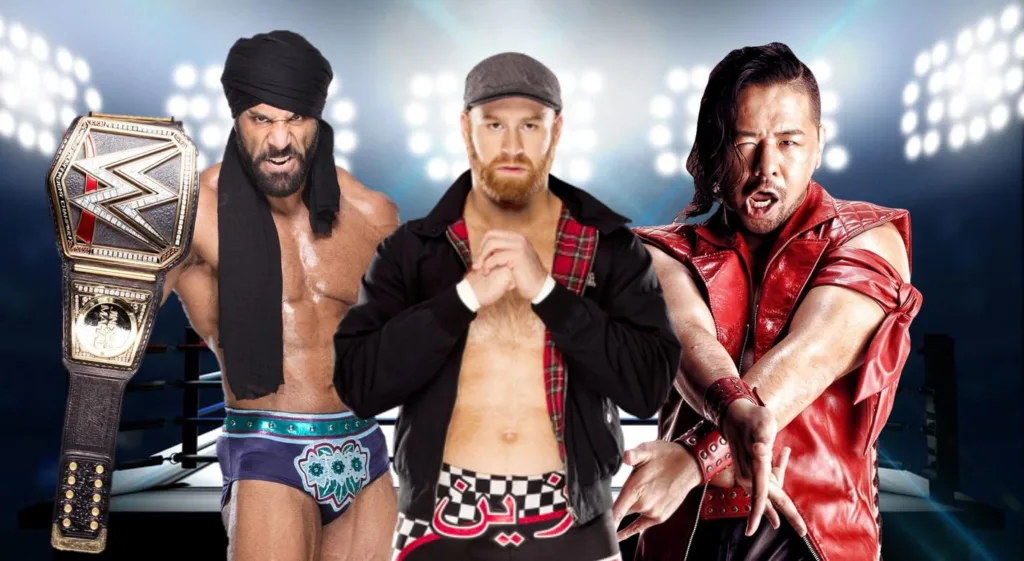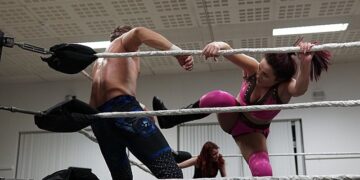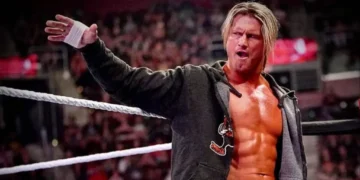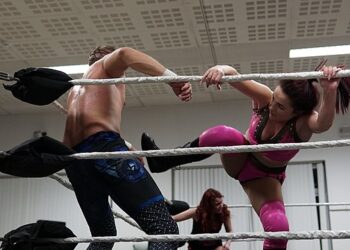
Introduction
Crikey, you’ve stumbled onto the question of the century, mate. ‘What culture WWE?’ A darned good question if you ask me! World Wrestling Entertainment, or WWE as it’s more endearingly known, is like a wild carnival that’s constantly on tour. It’s a dazzling extravaganza, an opera of organised chaos, and a high-stakes game of theatrical chess that has tickled the fancies of millions. So, what’s the secret recipe for this stew of entertainment? What’s simmering in the underbelly of this roaring beast?
What Culture WWE?
Like a pantomime horse, WWE’s culture is a thing of mystery and wonder, often leaving us pondering — what is the culture of WWE? Time to don the detective cap and shine some light on this riddle.
The Buffet of Triumph and Tragedy
Ever heard the saying, “you can’t have a rainbow without a little rain?” WWE is a living testament to this gem of wisdom. The narratives weaved in WWE can take you on a rollercoaster ride from the depths of despair to the heights of euphoria faster than you can say “Hulk Hogan”.
Larger-than-Life Personalities
Every wrestling ring is a soapbox for titanic personalities who spin yarns with their words and body slams. Think The Undertaker with his bone-chilling theatrics or Ric Flair and his flashy robes. These legends didn’t just bring wrestling to the telly — they encapsulated the rip-roaring, charisma-oozing culture that forms the spine of WWE.
The Circus of Kayfabe
Kayfabe, the bedrock of wrestling lore, is the shiny foil that turns an otherwise brutish spectacle into a mesmerising ballet of drama and tension. It’s the captivating charm that makes us forgive the obvious and immerse ourselves in the jaw-dropping, chair-smashing world of WWE.
The Evolution of WWE Culture
WWE culture is like a creature in the wild, constantly evolving and adapting. But how exactly has it morphed over the years?
From Backwater Bouts to Global Showdowns
WWE went from hosting sweaty brawls in backwater American towns to orchestrating grand spectacles in packed stadiums worldwide. The impact? It turned a niche pastime into a global obsession and transformed WWE’s culture into a tantalising mix of diverse influences.
The PG Era and Its Impact
In 2008, WWE thought it would be a hoot to slap a PG rating on their shows. The result? A bold, albeit polarising, shift towards family-friendly fare that’s had a lasting impact on the culture of WWE, akin to swapping a pint of ale for a cup of tea.
The Rise of Women’s Wrestling
It’s about bloody time! Women’s wrestling has been on the up-and-up in WWE, shaking up age-old male-dominated narratives and reshaping the company’s culture. It’s the much-needed dash of diversity in WWE’s spicy cultural mix.
Conclusion
After our whirlwind tour of the WWE universe, we’ve gleaned some insight into WWE’s culture. It’s a mind-boggling mélange of drama, sport, and the deliciously absurd. From the ringmasters that command our attention to the twisting tales that keep us glued to our seats, WWE’s culture is a spectacle unlike any other.
Well, buckle up, because the culture of WWE is a bit like a mullet — business in the front, party in the back. On the surface, it’s all about sport, spectacle, and a sprinkle of silliness. It’s moulded by its boisterous characters — folks who would be just as at home on the theatre stage as in the wrestling ring. They bring grand capers to life in front of an audience of die-hard fans, the sort who would gladly queue up in a blizzard for a meet-and-greet.
WWE’s culture has seen more transformations than a moth in a cocoon. From its humble beginnings as a regional wrestling promotion, it’s become a high-octane circus, complete with flashy outfits, fiery rivalries, and ostentatious entrances. Through the years, it’s morphed from an ‘anything-goes’ attitude of the Attitude Era to the family-friendly PG Era, and seen the rise of women’s wrestling. It’s a culture constantly in flux, just like Aunt Mabel’s homemade jelly.
Ah, the PG Era, a decision as controversial as pineapple on pizza. By choosing to cater to a wider, younger audience, WWE turned down the volume on its edgier aspects. No more beer-swilling anti-heroes or risqué storylines. Instead, it was all about superhero-esque characters and morality tales. Some fans kicked up a fuss, of course, but others welcomed the change. The PG Era has certainly left an indelible mark on WWE’s culture, a bit like a tattoo you got on a wild night out.
Remember when women’s wrestling was an afterthought in WWE? No more! Women wrestlers in WWE have busted through the glass ceiling, delivering matches and storylines as compelling as their male counterparts. They’ve added a dash of diversity to WWE’s spicy cultural mix, transforming it into a more balanced and inclusive spectacle.
Magic, probably. Nah, just kidding. It’s a careful balancing act of preserving the tried-and-true elements that fans love, while also embracing change and evolution. Keeping fans engaged, attracting new audiences, staying relevant in a changing media landscape — it’s all part of the game. It’s as much about the wrestlers’ charismatic performances as it is about compelling storylines and the fever-pitch energy of live events.
Imagine a rollercoaster ride next to a merry-go-round — that’s WWE compared to other sports entertainment companies. Its culture is louder, bolder, and more flamboyant. It’s like the rebellious sibling of the sports entertainment family, always pushing boundaries and never afraid to take a risk. While other companies may deliver the wrestling goods, WWE offers a unique blend of athletics and theatre that you’d be hard-pressed to find elsewhere.


































Comments 2